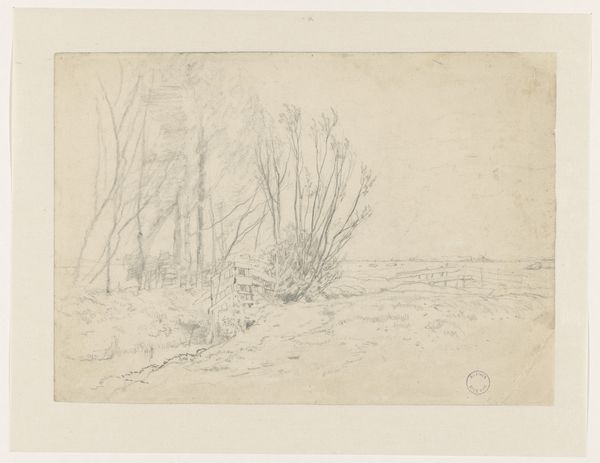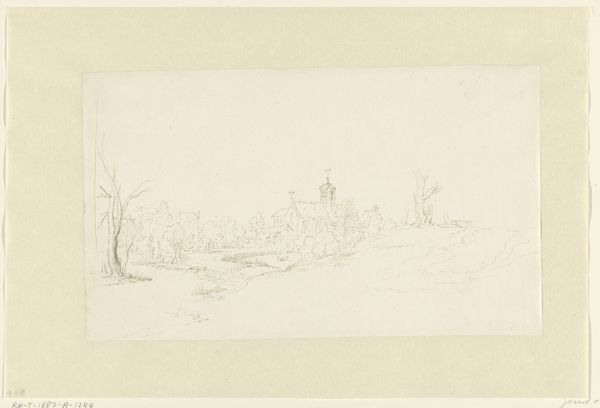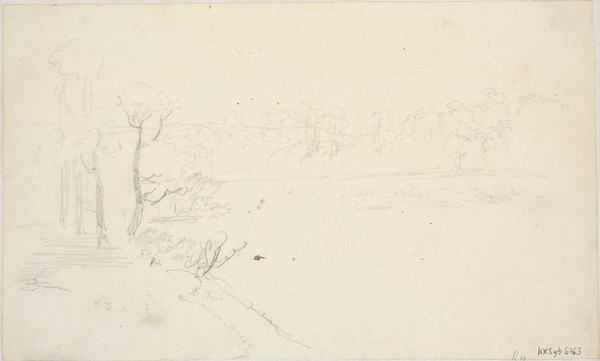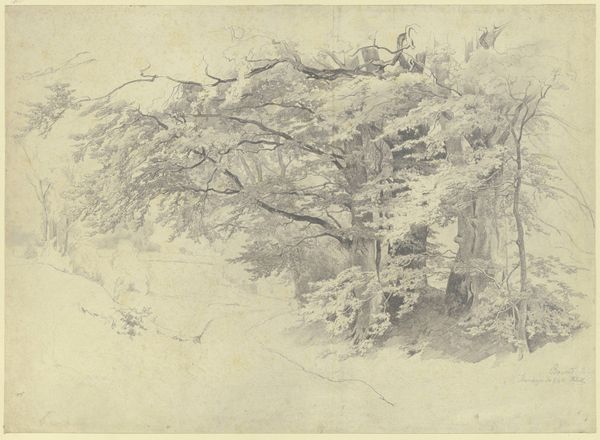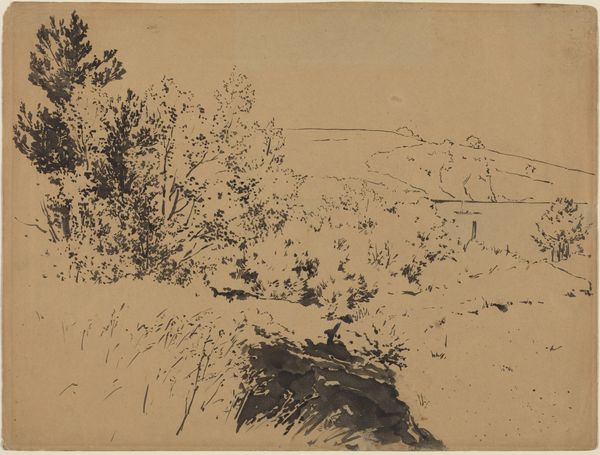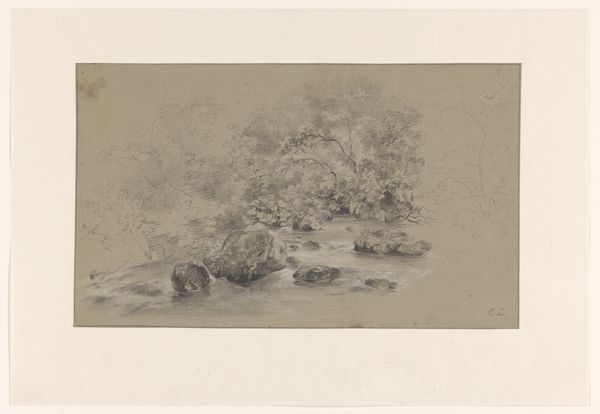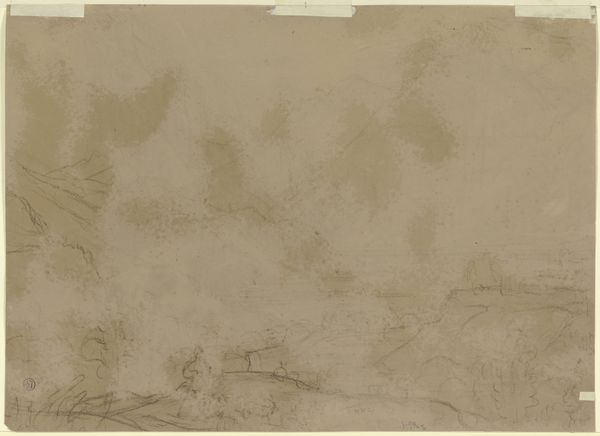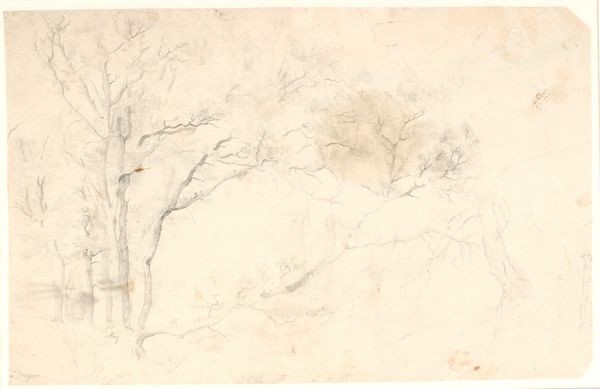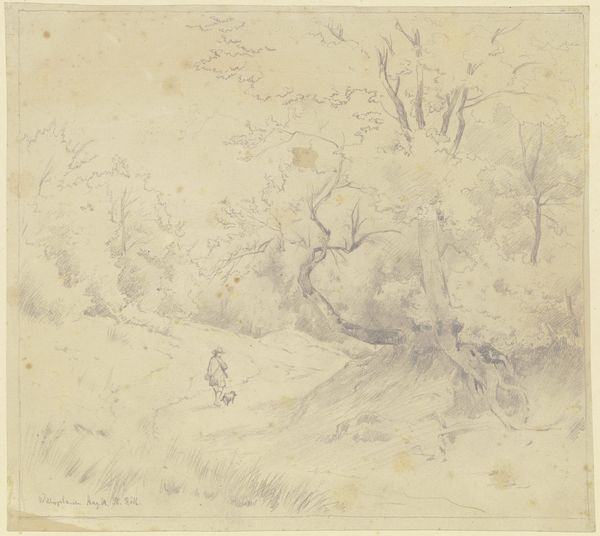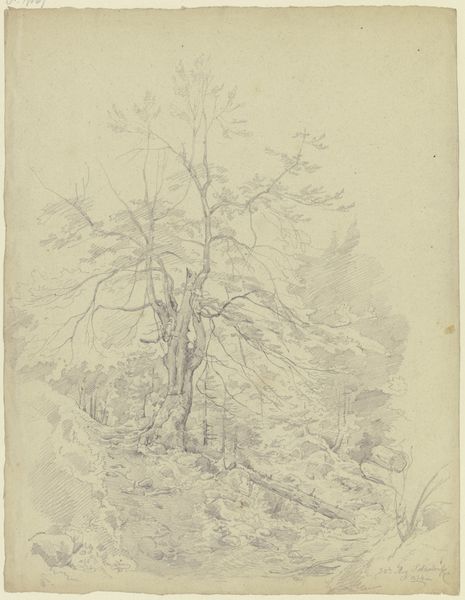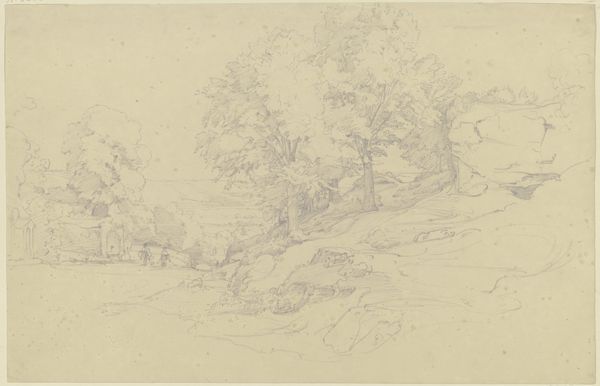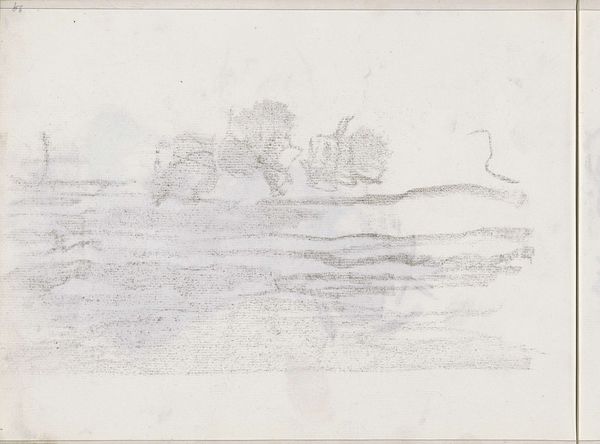
drawing, paper, pencil, graphite
#
drawing
#
pencil sketch
#
landscape
#
etching
#
paper
#
romanticism
#
pencil
#
graphite
#
realism
Dimensions: height 308 mm, width 497 mm
Copyright: Rijks Museum: Open Domain
Curator: Immediately, I sense a kind of ethereal stillness about this work. A quiet melancholy hangs in the air, doesn’t it? Editor: Yes, absolutely. We’re looking at “Landschap met bomen,” or “Landscape with Trees,” by Willem Maris, created around 1811. It’s a pencil and graphite drawing on paper, showcasing a fairly standard Romanticist landscape, though tinged with an undeniable Realism, or at least a keen observation of nature’s details. Curator: Those spindly trees... the subtle gradations of light... they evoke a powerful sense of vulnerability and the transience of time. Maris is really zeroing in on a sense of ephemerality through delicate, yet confident marks, as if to highlight our relationship with the passage of time. Do you notice the water there, toward the bottom? Editor: I do. And considering its place in art history, made me realize how revolutionary landscape painting and drawings were in affording artists new kinds of agency to communicate messages that impacted culture at the time. Remember that landscapes often mirrored the political and social climates they were made in. Do you see the artist commenting here on his socio-political position? Curator: Perhaps. But consider also the enduring symbolism of the forest, and especially these seemingly natural elements. Since ancient times, trees have represented strength, longevity, interconnectedness. And the watery, obscured ground we’re on as the viewing public in this scene only reinforces a message of reflection and unseen, buried histories that linger in the ground itself. Editor: A very good point, that this may be an invocation of history and a search for understanding and belonging. Though, I do wonder how much access the average citizen was even granted in those early days of state-supported and commissioned artworks? It does make one think about how far these images travel over time. Curator: Precisely. The emotional impact, then, for audiences today is radically different from that of its time, and we project new readings as society marches onward. So, do the original cultural and socio-political references even matter today, at all? It is hard to say. What lingers through time are simply those original symbols and a melancholic tone to remind us, at the very least, to live each day intentionally and in appreciation. Editor: I agree. It’s intriguing to see how Maris uses such simple materials to explore profound themes that resonate even now. It seems this humble sketch contains a multitude of historical and symbolical readings.
Comments
No comments
Be the first to comment and join the conversation on the ultimate creative platform.
